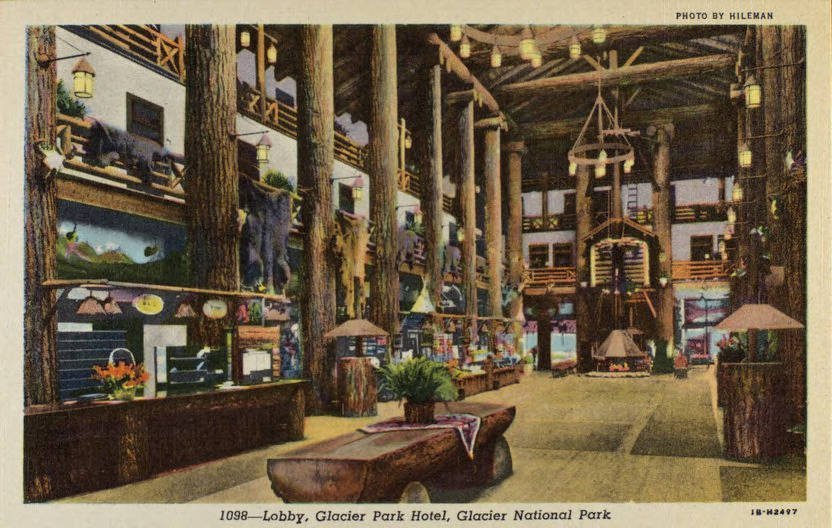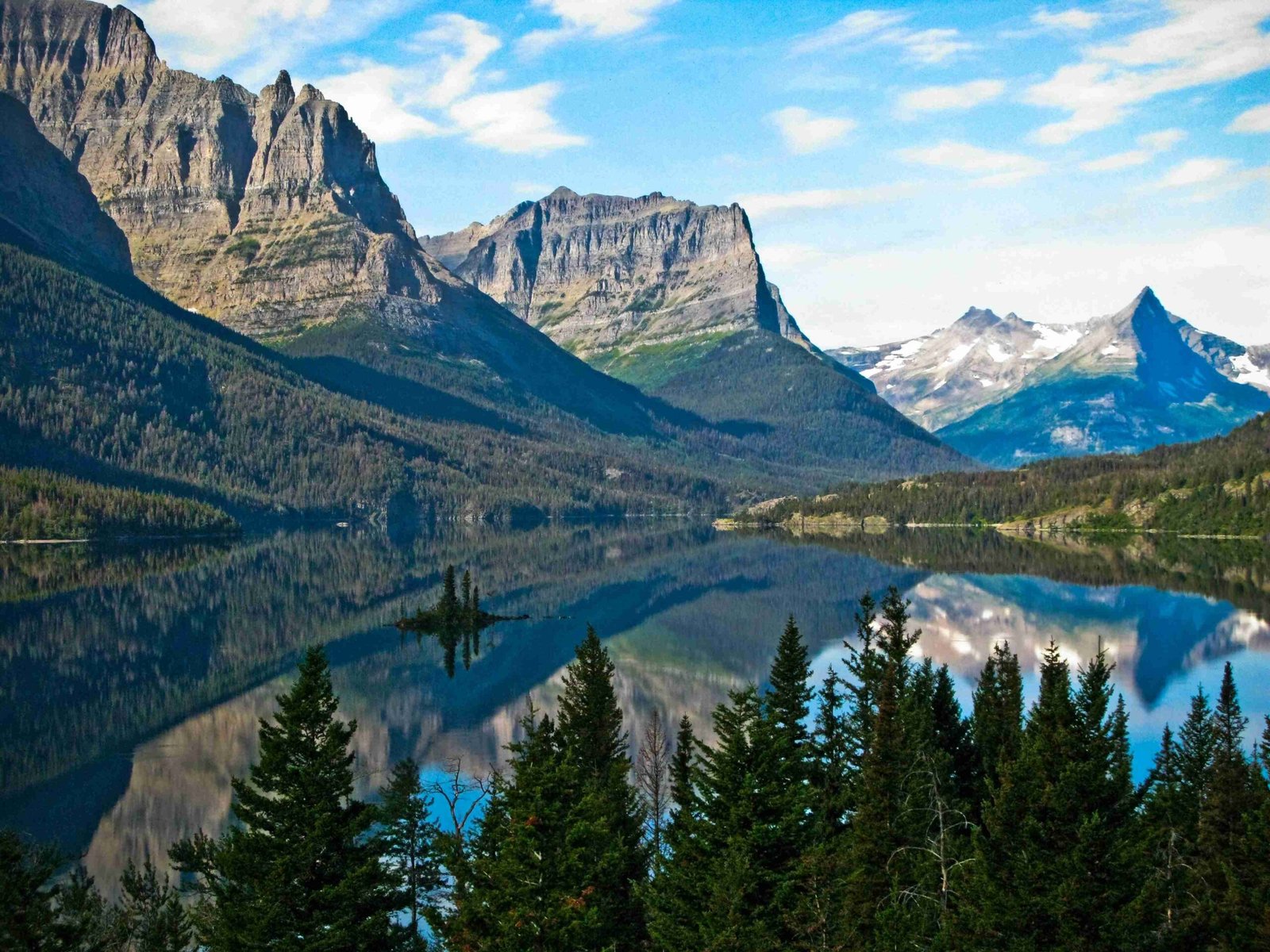Glacier National Park and Montana’s Flathead Valley offer breathtaking landscapes, diverse wildlife, and a plethora of outdoor activities. This guide provides essential information for exploring these stunning areas, including top hiking trails, scenic drives, wildlife viewing opportunities, and water activities on Flathead Lake. Whether you’re an avid hiker, nature enthusiast, or simply seeking a serene getaway, this region promises unforgettable experiences amidst pristine wilderness and majestic mountains.
What Are the Must-See Attractions in Glacier National Park?

Glacier National Park, often referred to as the \”Crown of the Continent,\” is a paradise for nature lovers and outdoor enthusiasts. Here are some of the park’s most iconic attractions:
-
Going-to-the-Sun Road: This 50-mile scenic drive is the park’s crown jewel, offering breathtaking views of glacial lakes, alpine meadows, and rugged mountain peaks.
-
Logan Pass: The highest point on Going-to-the-Sun Road, Logan Pass provides access to popular hiking trails and stunning vistas.
-
Many Glacier: This area is known for its pristine lakes, abundant wildlife, and some of the park’s most popular hiking trails.
-
Lake McDonald: The largest lake in the park, Lake McDonald is famous for its crystal-clear waters and colorful pebbles.
-
Waterton-Glacier International Peace Park: This UNESCO World Heritage Site combines Glacier National Park with Canada’s Waterton Lakes National Park.
What Are the Best Hiking Trails in Glacier National Park?

Glacier National Park boasts over 700 miles of trails, ranging from easy nature walks to challenging backcountry treks. Here are five of the best hiking trails:
- Highline Trail
- Distance: 11.6 miles point-to-point
- Elevation Gain: 800 feet ascent, 3000 feet descent
- Difficulty: Moderate
-
Highlights: Panoramic views, wildlife sightings, wildflower meadows
-
Grinnell Glacier Trail
- Distance: 10.6 miles round trip
- Elevation Gain: 1,600 feet
- Difficulty: Strenuous
-
Highlights: Glacial lakes, waterfalls, potential wildlife sightings
-
Iceberg Lake Trail
- Distance: 9.6 miles out-and-back
- Elevation Gain: 1,200 feet
- Difficulty: Strenuous
-
Highlights: Turquoise lake with floating icebergs, wildflower meadows
-
Hidden Lake Overlook Trail
- Distance: 5.3 miles out-and-back
- Elevation Gain: 1,325 feet
- Difficulty: Moderate
-
Highlights: Alpine meadows, mountain goat sightings, panoramic views
-
Ptarmigan Tunnel Trail
- Distance: 10.6 miles out-and-back
- Elevation Gain: 2,300 feet
- Difficulty: Strenuous
- Highlights: Unique tunnel through the mountain, diverse landscapes
What Are the Best Scenic Drives in Flathead Valley?
Montana’s Flathead Valley offers some of the most picturesque drives in the country. Here are three must-do scenic routes:
- Going-to-the-Sun Road
- Distance: Approximately 50 miles
- Estimated Driving Time: 2-3 hours
- Key Viewpoints: Logan Pass, Bird Woman Falls, Weeping Wall
-
Best Time to Drive: Late June to early October
-
Flathead Lake Scenic Byway (US-93)
- Distance: Approximately 90 miles around Flathead Lake
- Estimated Driving Time: 2-3 hours
- Key Viewpoints: Polson Bay, Bigfork, Wayfarers State Park
-
Best Time to Drive: Year-round, but summer offers the best weather
-
Hungry Horse Dam and Reservoir Scenic Drive
- Distance: Approximately 20 miles
- Estimated Driving Time: 1 hour
- Key Viewpoints: Hungry Horse Dam, Hungry Horse Reservoir
- Best Time to Drive: Late spring to early fall
Where Are the Best Wildlife Viewing Spots in Glacier National Park?
Glacier National Park is home to diverse wildlife, including grizzly bears, mountain goats, and bighorn sheep. Here are the best locations for wildlife viewing:
- Logan Pass: Known for mountain goats and occasional grizzly bear sightings
- Many Glacier: Common sightings of moose, grizzly bears, and mountain goats
- St. Mary Valley: Frequently spotted are grizzly bears, bighorn sheep, and elk
Remember to maintain a safe distance from wildlife and follow park regulations:
– Keep at least 100 yards from bears and wolves
– Maintain 25 yards distance from other wildlife
– Always carry bear spray and know how to use it
– Make noise while hiking to avoid surprising animals
What Water Activities Are Available on Flathead Lake?
Flathead Lake, the largest freshwater lake west of the Mississippi, offers a variety of water activities:
- Kayaking and Paddleboarding
- Rental Locations: Polson, Bigfork, Wayfarers State Park
- Costs: $20-$50 per hour, $50-$100 per day
- Equipment: Single and tandem kayaks, stand-up paddleboards
-
Safety: Wear life jackets, be aware of weather conditions
-
Boat Rentals
- Rental Locations: Marinas in Polson, Bigfork, Wayfarers State Park
- Costs: $100-$500 per day, depending on boat type
- Options: Fishing boats, pontoon boats, speedboats
-
Safety: Follow boating rules, wear life jackets
-
Fishing
- Popular Fish: Lake trout, yellow perch, whitefish
- Fishing License: Required, available online or at local shops
- Guided Tours: Fishing charters available through local outfitters
What Are the Best Accommodations in Glacier National Park and Flathead Valley?
Accommodation options range from rustic campgrounds to luxury lodges:
- In Glacier National Park
- Many Glacier Hotel: Historic lodge with stunning views
- Lake McDonald Lodge: Rustic charm on the shores of Lake McDonald
-
Campgrounds: 13 campgrounds within the park, varying in amenities
-
In Flathead Valley
- Whitefish Mountain Resort: Ski-in/ski-out lodging with summer activities
- Marina Cay Resort (Bigfork): Lakeside accommodations with boat rentals
- Camping: State parks around Flathead Lake offer camping facilities
When Is the Best Time to Visit Glacier National Park and Flathead Valley?
The best time to visit depends on your preferred activities:
- Summer (June-August): Peak season with warm weather, all facilities open
- Fall (September-October): Fewer crowds, beautiful fall colors, cooler temperatures
- Winter (November-March): Limited access, but great for winter sports
- Spring (April-May): Quieter, but some facilities may still be closed
Consider the following factors when planning your visit:
– Going-to-the-Sun Road typically opens fully in late June or early July
– Some hiking trails may be snow-covered until mid-July
– Wildlife is most active in early morning and late evening
What Should I Pack for a Trip to Glacier National Park and Flathead Valley?
Essential items for your trip include:
- Layered clothing (temperatures can vary greatly)
- Sturdy hiking boots
- Rain gear
- Sun protection (hat, sunscreen, sunglasses)
- Bear spray (available for purchase locally)
- Binoculars for wildlife viewing
- Reusable water bottle
- First aid kit
- Insect repellent
- Camera to capture the stunning landscapes
By exploring Glacier National Park and Montana’s Flathead Valley, you’ll experience some of the most awe-inspiring natural beauty in North America. From hiking rugged trails to cruising scenic roads, and from spotting diverse wildlife to enjoying water activities on Flathead Lake, this region offers unforgettable adventures for every type of traveler.
References:
1. National Park Service – Glacier National Park
2. Visit Montana – Glacier Country
3. Flathead Lake State Park